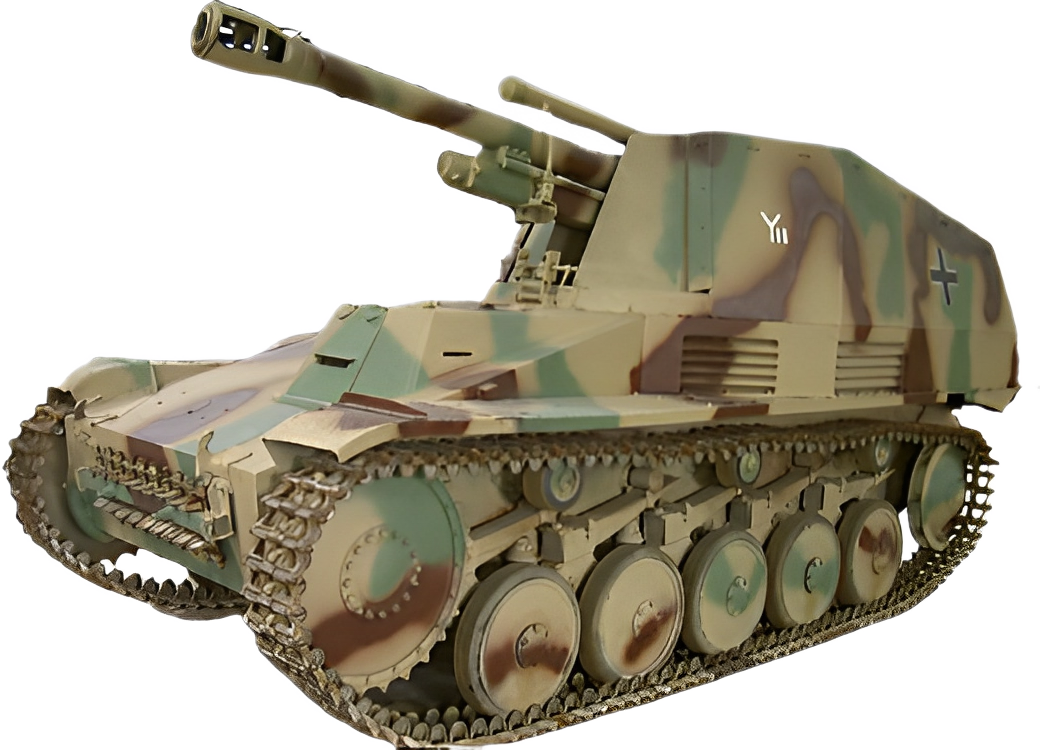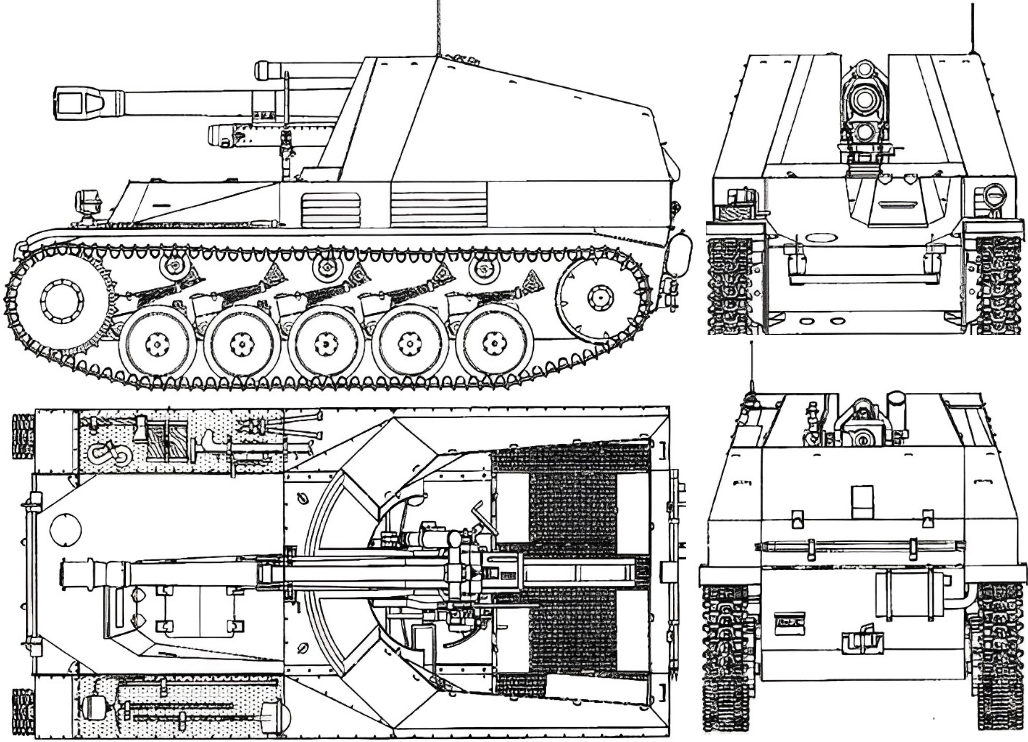
You know that:
- The WESPE light howitzer was created in 1942 by building a gun turret on the chassis of obsolete Panzer II tanks.
- The designer of the machine was German engineer Alfred Becker, who used reverse engineering methods using captured Sextox and M7 Priest howitzers.
- The result was a relatively manoeuvrable and dangerous indirect fire support gun with a 105 mm barrel.
- The gun turret was open which reduced the protection of the crew from enemy infantry.
- The service of a WESPE howitzer crew member was not easy. The only way to protect oneself from the weather on the Eastern Front was to stretch an oil-impregnated tarpaulin, which, however, was often torn by the pressure of recoil..
- The howitzer carried a supply of 90 fragmentation shells with an effective range of 8,400 m. Two to three pieces of ammunition were fitted with an anti-tank warhead.
- By 1944, a total of 676 units were produced by the Famo-Ursus company in Warsaw.
- Only about 6 pieces have survived to this day. One of them is exhibited in the German Tank Museum Munster.
Technical parameters:
- Dimensions: length 4.81 , width 2.28 m, height 2.30 m
- weight 11 480 kg
- armouring 5 - 30 mm
- power unit petrol engine Maybach 6V HL 62 TRM with 103 kW
- maximum speed 40 km/h
- range 220 km
- main armament howitzer leFH 18/2 calibre 105 mm
- crew 5
From the memoirs of Wilhelm Kirchner - 3rd Panzerarmee:
"Our 'Wasp' was fast, agile and our attack was devastating. It was our home, our weapon and our fortress. We felt invincible. But that passed quickly. During the operation in the Kursk Arch, our engine broke down. Without the engine, you can't manoeuvre, and without manoeuvring, there's only one thing to do. In a second, we went from fearless knights to troubled mice. What have we done, you ask? I'll tell you. We ran! "
Assembly Instructions




